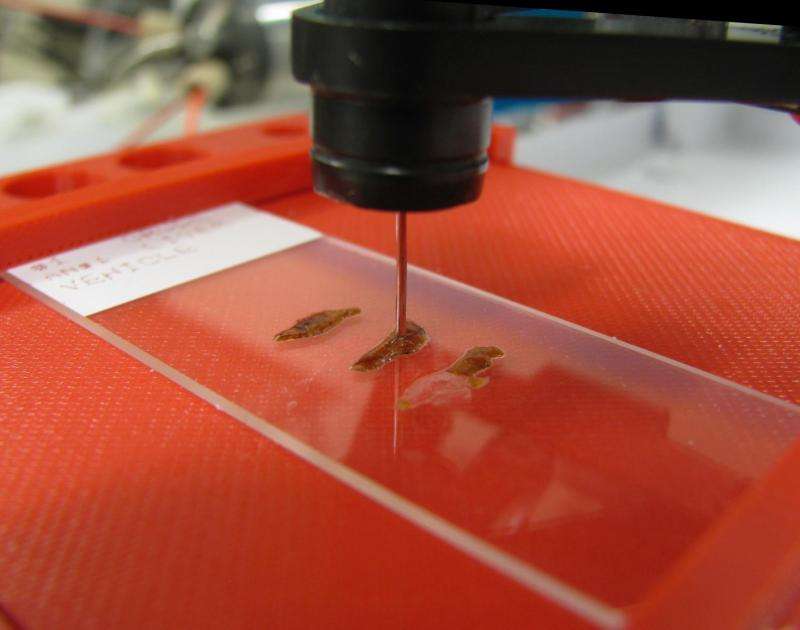New tool on horizon for surgeons treating cancer patients

Surgeons could know while their patients are still on the operating table if a tissue is cancerous, according to researchers from the Department of Energy's Oak Ridge National Laboratory and Brigham and Women's Hospital/Harvard Medical School.
In the journal Analytical and Bioanalytical Chemistry, a team led by ORNL's Vilmos Kertesz describes an automated droplet-based surface sampling probe that accomplishes in about 10 minutes what now routinely takes 20 to 30 minutes. Kertesz expects that time to be cut to four to five minutes soon. For this proof-of-concept demonstration, researchers rapidly profiled two hormones from human pituitary tissue.
"Instead of having to cut and mount tissue and wait for a trained pathologist to review the sample under a microscope, a technician might soon perform an equally conclusive test in the operating environment," Kertesz said.
The new mass spectrometry-based technology provides an attractive alternative to the traditional method called immunohistochemistry, or IHC, which looks for specific protein biomarkers to make a diagnosis. Although the IHC approach provides a high degree of spatial recognition, it is time consuming and limited by the quality and specificity of the antibody used to detect the protein.
ORNL researchers trace this success to patents resulting from previously funded DOE projects and noted that this work advances the liquid microjunction surface sampling probe technology first patented by ORNL. Additionally, ORNL houses the only laboratories in the world that have this automated droplet-based surface sampling probe and the requisite software.
While yet other mass spectrometry-based techniques such as desorption electrospray ionization and rapid evaporative ionization mass spectrometry are being evaluated for classifying tumors and providing prognostic information, they are limited mainly to the analysis of lower molecular weight biomolecules. These include metabolites, fatty acids and lipids. The new droplet-based method developed at ORNL does not share this limitation.
"The ability to quickly characterize the tissue distribution of larger macromolecular biomarkers like peptides and proteins would harness the diagnostic value of validated immunohistochemistry approaches for surgical decision-making," Kertesz said.
Kertesz noted that this system has been successfully used for spatially resolved sampling and detection of drugs and metabolites from thin sections of animal tissue and proteins from dried blood.
"On the basis of the results and the relative simplicity, rapidity and specificity of our method, there is great potential for our technology to assist surgeons in the detection of cancer from tissue biopsy samples," said Kertesz, a member of ORNL's Organic and Biological Mass Spectrometry Group and lead author of the paper. Gary Van Berkel of ORNL is a co-author. The paper is available at http://link.springer.com/article/10.1007/s00216-015-8803-2
Journal information: Analytical and Bioanalytical Chemistry
Provided by Oak Ridge National Laboratory


















